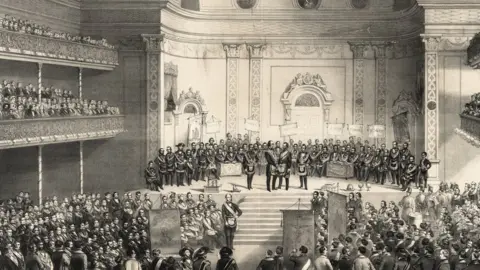Simplified Steps to Help You Understand How to Join a Masonic Lodge Quickly
Simplified Steps to Help You Understand How to Join a Masonic Lodge Quickly
Blog Article
Checking Out the Mysteries of the Freemason: What You Need to Know
The Freemason, a term often shrouded in intrigue and debate, represents a complicated tapestry of historic truth and contemporary myth. Developed in the late 18th century, this secret culture was originally rooted in the Knowledge's perfects yet has actually given that come to be identified with conspiracy theory concepts regarding elite control. As we navigate the origins, key figures, and the raw comparison in between misconception and truth, one should think about how these narratives affect modern understandings of power and secrecy. What may be revealed via a more detailed assessment of these aspects could test long-held presumptions regarding the shadows that stick around in our culture.
Beginnings of the Freemason
The origins of the Freemason are soaked in a blend of historical intrigue and ideological eagerness. Established in 1776 in Ingolstadt, Bavaria, by Adam Weishaupt, the team was at first created as a secret society aimed at promoting Knowledge ideals such as factor, secularism, and the splitting up of church and state. Weishaupt, a teacher of canon regulation, looked for to challenge the prevailing authority of the church and state, which he deemed overbearing institutions suppressing intellectual and individual liberty.
The Freemason sought to hire prominent participants from numerous social sectors, including national politics, academia, and the arts, to cultivate a network committed to these Knowledge principles. The society run under a veil of privacy, utilizing coded language and routines to protect its participants from persecution, specifically offered the repressive climate of the moment. The Freemason dealt with significant resistance from both governmental authorities and religious establishments, which checked out the team as a risk to their power.
Trick Numbers and Members
Who were the pivotal numbers that shaped the Freemason's early impact and direction? The Bavarian Freemason, established in 1776 by Adam Weishaupt, arised as a feedback to the overbearing social structures of the moment. how to become a freemason. Weishaupt, a law teacher, pictured the organization as a method to promote Knowledge suitables such as reason, secularism, and equal rights. His preliminary employment initiatives included prominent intellectuals, such as Baron von Knigge, that played an important role in increasing the group's membership and organizational structure.
Another substantial figure was Johann Gottlieb Fichte, a famous theorist whose concepts on nationalism and education resonated with the Freemason's objectives. Although Fichte was not a formal participant, his thoughtful underpinnings affected the team's ideology. Furthermore, figures like the author and philosopher Johann Wolfgang von Goethe were related to the more comprehensive intellectual motions of the moment, although their direct involvement with the Freemason continues to be questioned.
These essential figures contributed to the Freemason's very early instructions, pushing the limits of political and social idea, while their collective initiatives intended to challenge established norms and promote an environment of modern change in Europe.
Misconceptions vs. Truth
Many misconceptions surround the Freemason, typically mixing reality with fiction in a way that obscures its true nature. The concept that the Freemason continues to apply substantial influence over world occasions is a misconception - how to become a freemason.
One more widespread misconception is that the Freemason comprises a network of elite people adjusting international affairs. In truth, numerous conspiracy theory concepts exaggerate the group's value, associating unfounded objectives to social patterns and occasions. This has actually brought about an oversimplified view of intricate concerns.

Modern Interpretations
Contemporary interpretations of the Freemason often show broader societal stress and anxieties and an attraction with secrecy and power. This modern lens regularly associates the Freemason with conspiracy theories that recommend a hidden elite orchestrates world events, adjusting federal governments and economic climates for their very own gain. Such stories take advantage of an ingrained suspect of authority, particularly in times of dilemma or social upheaval.

Moreover, some modern-day interpretations frame the Freemason as an allegory for the intricacies of globalization and the interconnectedness of influential people and companies. This point of view encourages a critical evaluation of just how power characteristics operate in today's world, highlighting the balance between transparency and secrecy in governance and business practices.
Social Influence and Heritage
Influenced by centuries of intrigue, the cultural influence and legacy of the Freemason extend far past its historic beginnings. This secret society, established in the late 18th century, has actually permeated various elements of prominent society, from literature and movie to music and art. The concept of the a knockout post Freemason has evolved into a symbol of conspiracy concepts, often standing for a viewed covert power adjusting worldwide occasions.
In literary works, writers like Dan Brown have actually woven the Freemason into elaborate stories, captivating viewers with styles of secrecy and power. Movies such as "National Prize" and "The Da Vinci Code" further perpetuate the allure of the society, mixing fact with fiction to develop engaging narratives.
The Freemason's impact additionally prolongs right into songs, with musicians referencing the organization to stimulate styles of rebellion and societal critique. This representation has contributed to an attraction with Recommended Reading the concept of clandestine groups regulating the bars of power, showing societal anxiousness regarding authority and transparency.
Ultimately, the Freemason's heritage is an intricate tapestry of misconception and truth, shaping assumptions of privacy and control in modern discourse. Its enduring existence in society underscores humankind's seasonal quest for understanding covert facts.
Conclusion
The exploration of the Freemason reveals a complicated interaction in between historical facts and contemporary myth-making. Founded in the Enlightenment period, this society intended to test oppressive structures, yet its tradition has actually been outweighed by conspiracy concepts that recommend elite control. Understanding the differences in between the original ideals and modern interpretations YOURURL.com is important for understanding the enduring attraction with the Freemason and its substantial influence on social narratives surrounding power and secrecy in society.
Report this page